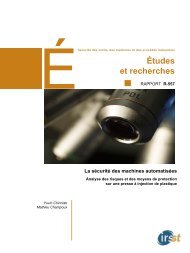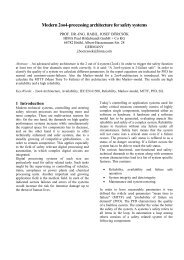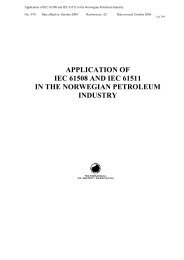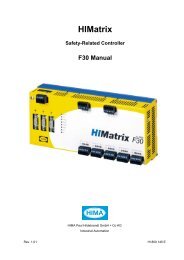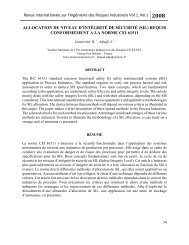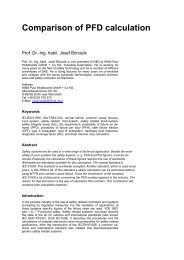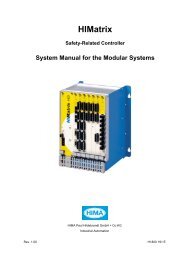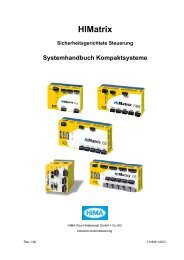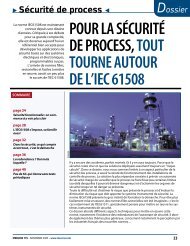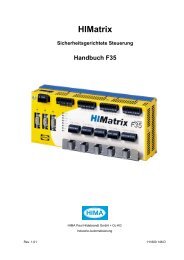Functional Safety
Functional Safety
Functional Safety
Create successful ePaper yourself
Turn your PDF publications into a flip-book with our unique Google optimized e-Paper software.
White Paper<br />
Tino Vande Capelle, Dr. M.J.M. Houtermans<br />
<strong>Functional</strong> <strong>Safety</strong>: A Practical Approach<br />
for End-Users and System Integrators<br />
Another important factor is the safe failure fraction (SFF). This is basically a measure of the<br />
fail safe design and build-in diagnostics of the subsystem. A subsystem can fail safe or<br />
dangerous. Safe failures are those failures that case the subsystem to carry out the safety<br />
function without a demand. For example, the safety function of an emergency shutdown<br />
valve is to close upon demand. We call it a safe failure if the valve closes because of an<br />
internal failure without an demand. A dangerous failure is the opposite. The valve has failed<br />
dangerous if it cannot close upon demand because of an internal failure. Some components<br />
also have internal diagnostics (diagnostics should not be confused with proof testing). If that<br />
is the case it is possible to detect failures and act upon the detection. Smart sensor and<br />
logic solvers typically can have build-in diagnostics. Taking this into account a subsystem<br />
can basically have four different kind of failures:<br />
� Safe detected (SD)<br />
� Safe undetected (SU)<br />
� Dangerous detected (DD)<br />
� Dangerous undetected (DU)<br />
If we know the failure rates for each subsystem in terms of these four failure categories then<br />
we can calculate the SFF as follows:<br />
SFF<br />
=<br />
λ<br />
SD<br />
λSD<br />
+ λSU<br />
+ λDD<br />
+ λ + λ + λ<br />
SU<br />
HIMA <strong>Functional</strong> <strong>Safety</strong> Consulting Services Page 11<br />
DD<br />
DU<br />
From the above formula you can see that the SFF is fully determined by the failure rate of<br />
the dangerous undetected failures. In other words if we make a fail safe design (lots of safe<br />
failures) and we diagnose a lot of dangerous failures (DD) then we will have little dangerous<br />
undetected failures and thus a high SFF.<br />
It is important to understand these concepts in order to be able to interpret Table 1 and 2. A<br />
system integrator receives from an end-user only the safety function definition with a SIL<br />
level attached to it. From the SIL level the system integrator then needs to determine the<br />
Type, HFT, and SFF of the subsystem. For example if the system integrator needs to<br />
measure the temperature with a subsystem of SIL 3 then there are among others the<br />
following options (see Table 1 and 2):<br />
� 1 type A sensor with a SFF > 90%<br />
� 2 type A sensors, 1oo2 or 2oo3, with a SFF 60-90%<br />
� 3 type A sensors, 1oo3, with no diagnostics<br />
� 1 type B sensor with a SFF > 99%<br />
� 2 type B sensors, 1oo2 or 2oo3, with a SFF 90-99%<br />
� 3 type B sensors, 1oo3 with a SFF 60-90%<br />
In other words the system integrator has a lot of design options to choose from. The actual<br />
design depends on many things. For example what kind of sensors are available on the<br />
market? Which type are they, which SFF do they achieve. Does the end-user have a<br />
preferred vendor list to choose from? And so on.



